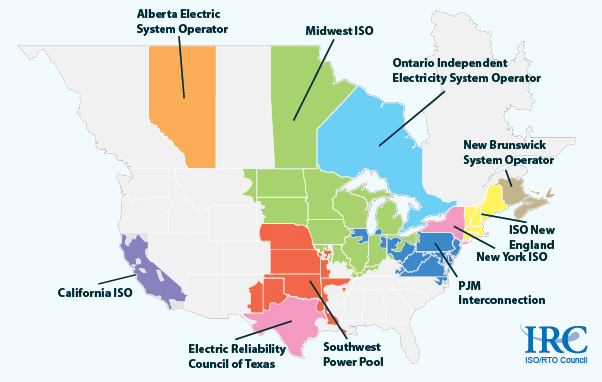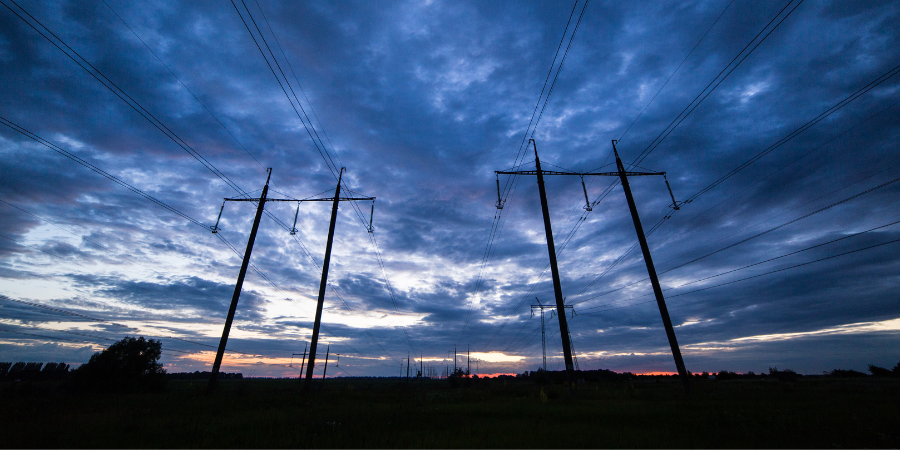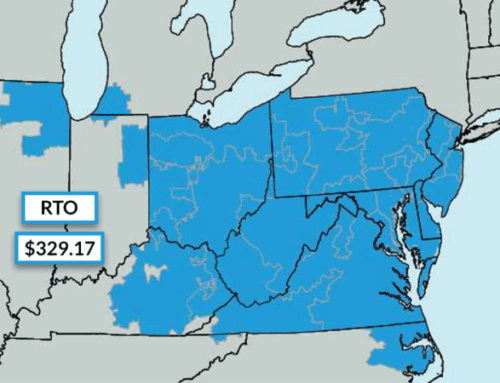In the world of power system operation, the reliability and efficiency of energy delivery relies on two key players: Regional Transmission Organizations (RTOs) and Independent System Operators (ISOs). They manage power transmission grids, reliability, and wholesale electricity markets. While RTOs and ISOs have some overlap, they are different entities with different roles, structures, and regions. In this article, we’ll get into the details of what RTOs and ISOs do, how they fit into the power transmission system, and what energy market participants should know.
RTO vs. ISO: What Are Regional Transmission Organizations & Independent System Operators?
Regional Transmission Organizations (RTOs) and Independent System Operators (ISOs) are both federally regulated entities that manage and coordinate the flow of electricity across large parts of the power transmission grid. These system operators both manage energy, capacity, and ancillary markets; however, they do slightly different things:
- RTOs manage the flow of electricity across a large, multi-state power transmission system. They ensure power reliability and transmission planning to prevent grid blackouts in big, deregulated energy markets. RTOs have more overall control of the grid than ISOs.
- ISOs are similar in operation but cover smaller areas than RTOs, often within a single state or region. They manage power generation and distribution to meet real-time demand while ensuring system reliability.
Both types of organizations operate in deregulated energy states and provide a market for competitive energy suppliers to access and deliver energy to end users.
The Roles Of ISOs & RTOs In The Energy Markets
Both RTOs and ISOs manage the electrical power system to ensure it’s stable and efficient, though their roles may differ:
Energy Markets
Both RTOs and ISOs manage the wholesale energy markets where electricity is bought and sold. By balancing supply and demand, they set real-time prices and day-ahead prices in the spot market, which impacts energy costs across regions. Their work affects energy prices and market forecasts, which you can read more about in our latest brief on Energy Prices and Market Forecast 2025.
Grid Reliability
RTOs and ISOs monitor the power grid to anticipate and manage demand fluctuations, maintain reliability, and minimize system disruptions. They ensure power generation matches consumption at all times to avoid blackouts or brownouts.
Power Transmission
They coordinate electricity transmission across the grid to deliver it to utilities and end users. Both RTOs and ISOs continually monitor the transmission system for congestion and manage energy capacity to balance the flow of electricity.
Renewable Integration
With the rise of renewable energy, RTOs and ISOs have been instrumental in integrating renewables like wind and solar energy into the grid. They do this by balancing the intermittent nature of renewable power generation with stable demand. Learn more about how the renewable energy landscape is transforming in our latest brief: Renewable Energy Trends 2025.
Capacity Planning and Transmission Upgrades
Both RTOs and ISOs manage capacity planning to ensure the grid can meet future energy needs. They manage and host regular capacity auctions where generators bid on future capacity prices. They also identify infrastructure upgrades and new transmission lines needed to keep up with growing demand and support the broader shift to grid modernization and energy security.
Key Differences
While RTOs and ISOs have many similarities, the main differences lie in their scope, regulatory structure, and geographic focus:
Geographic Area
RTOs manage bigger, multi-state regions, whereas ISOs operate within single states or smaller areas. This larger area allows RTOs to take on more responsibilities, such as long-distance transmission planning.
Regulatory Requirements
RTOs face stricter federal oversight as they cover multiple states and operate in larger deregulated energy markets. The Federal Energy Regulatory Commission (FERC) requires RTOs to manage market operations and transmission planning on a bigger scale than ISOs.
Market Participation
Both RTOs and ISOs operate in deregulated markets; however, RTOs manage more energy transactions and capacity markets due to their larger service areas. They enable more competition and diversity in the energy market by allowing cross-state energy trading.
Grid Management Complexity
Because of their larger geographic area, RTOs have to manage more complex transmission issues and cross-state energy flows. This includes managing local electricity congestion and line losses over longer distances, which is critical for system efficiency. You can learn more about this in our guide to Understanding Line Losses in Energy Transmission.
North American ISOs and RTOs
Here’s a list of the main Regional Transmission Organizations (RTOs) and Independent System Operators (ISOs) in the U.S.:
- PJM Interconnection (PJM) – Covers parts of the Midwest and Northeast, including all or parts of Delaware, Illinois, Indiana, Kentucky, Maryland, Michigan, New Jersey, North Carolina, Ohio, Pennsylvania, Tennessee, Virginia, West Virginia, and the District of Columbia. We wrote an article recently on PJM’s capacity price increase.
- Midcontinent Independent System Operator (MISO) – Manages electricity across the Midwest, South, and parts of Canada. It covers all or parts of Arkansas, Illinois, Indiana, Iowa, Kentucky, Louisiana, Michigan, Minnesota, Mississippi, Missouri, Montana, North Dakota, South Dakota, Texas and Wisconsin.
- California Independent System Operator (CAISO) – Oversees the electric grid for most of California and a small part of Nevada.
- New York Independent System Operator (NYISO) – Manages the transmission system and energy markets for New York State.
- ISO New England (ISO-NE) – Manages electricity across the six New England states: Connecticut, Maine, Massachusetts, New Hampshire, Rhode Island and Vermont.
- Southwest Power Pool (SPP) – Covers parts of the South and Midwest, including all or parts of Arkansas, Kansas, Louisiana, Mississippi, Missouri, Nebraska, New Mexico, Oklahoma, South Dakota and Texas.
- Electric Reliability Council of Texas (ERCOT) – Manages the electric grid and energy markets for most of Texas.
- Alberta Electric System Operator (AESO) – While technically in Canada, it is closely integrated with the US grid and operates in Alberta.
Each of these RTOs and ISOs manages energy flow and reliability for their region, enabling competitive markets and the US grid.

Source: EIA.gov
Need Help Exploring Energy Markets?
As energy markets grow and change, the role of RTOs and ISOs in the transmission system will continue to be critical to grid stability, renewable integration, and competitive energy markets. By managing generation, demand, and modern grid technology, RTOs and ISOs are leading the way to a reliable grid.
If you’re a business located in a deregulated market, Diversegy’s team can help you navigate your energy needs. We service customers in all ISOs and RTOs across the U.S. and have a deep understanding of energy procurement and renewable energy strategies in these markets. Contact us today.



